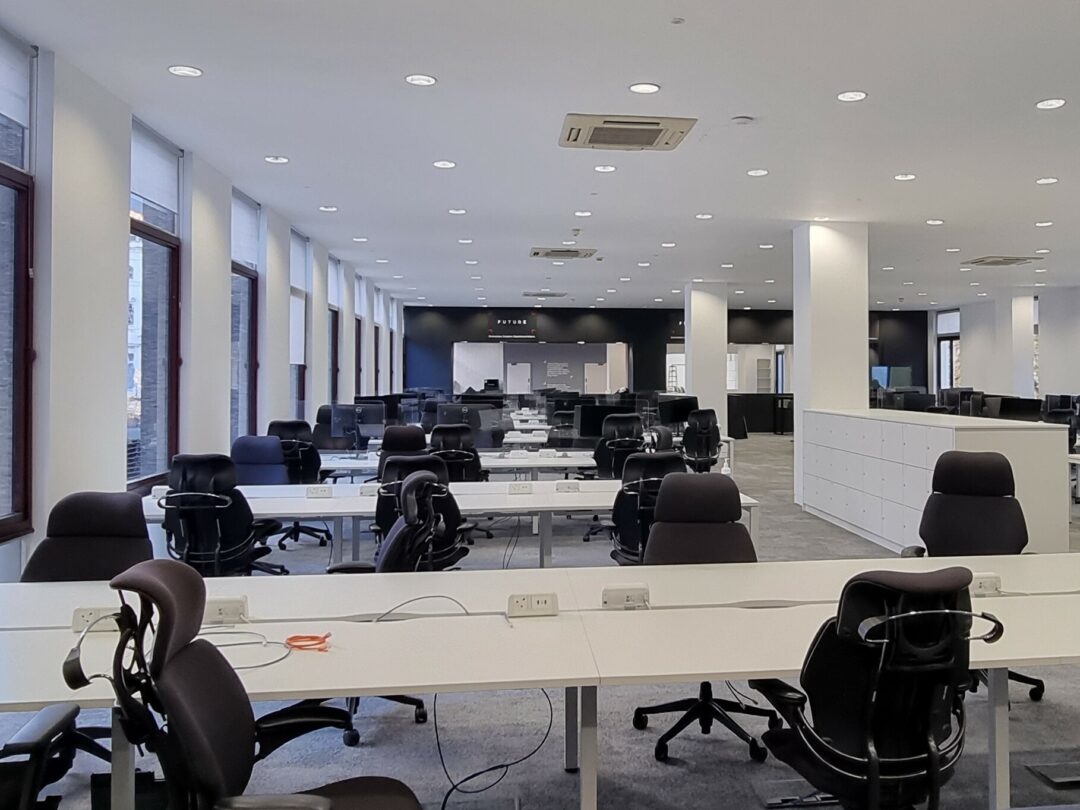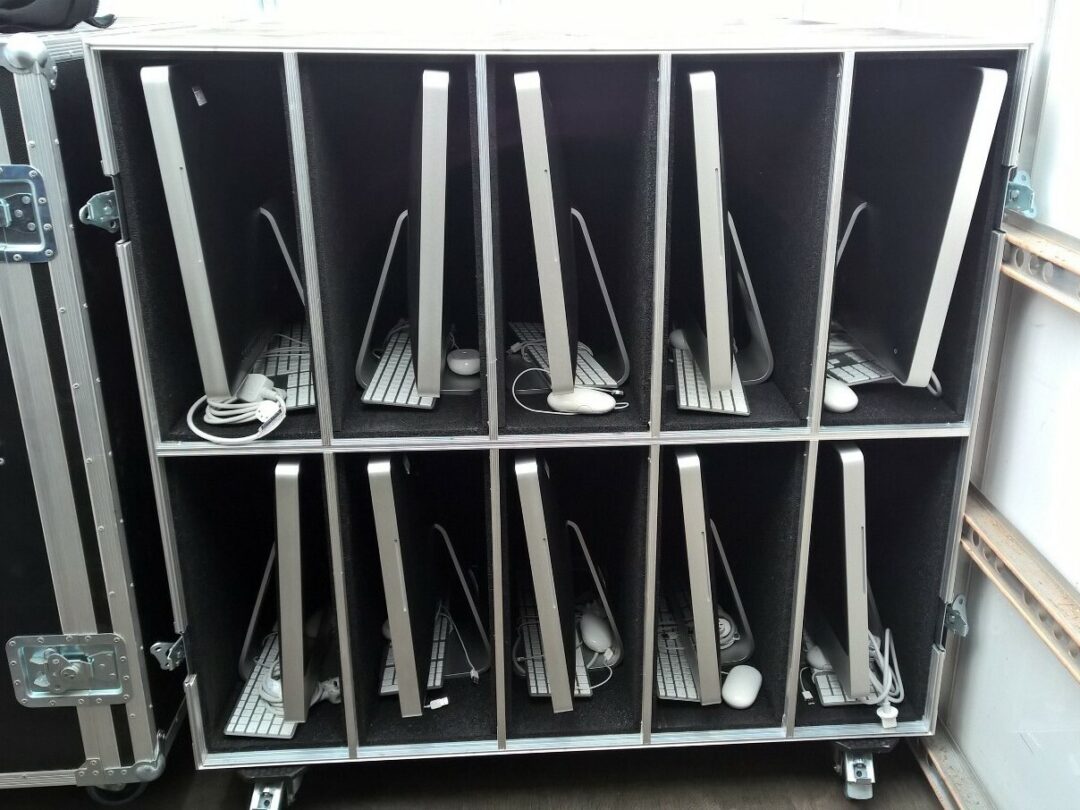How the emergence of the Omicron variant may impact the office workplace as we move into 2022.
The COVID-19 pandemic forced many businesses to adapt their working practises, including but not limited to, an increase in both remote and hybrid working. This has led to up to 67% of CEOs in the tech industry stating their organisations will need less space in the future.
A year on from this research, and just as companies are beginning to adapt to these new practices, the emergence of the Omicron variant is likely to force many employers to revisit their approach.
Hybrid Working
Remote working has become common for many companies over the last two years, with an estimated 61% of office-based workers now saying remote working should be the new default. Businesses have recognised the effectiveness of mixing remote and office working and this has led to a more flexible approach, even after some COVID restrictions were relaxed.
The success of flexible working structures has caused companies to begin to try and better understand the different dynamics among their workforce. Consequently, employers have begun to recognise that some employees work better remotely, while others prefer being in the office more regularly. Some companies have even offered their employees the option of selecting how they would like to work - fully remote, fully office-based, or a ‘hybrid’ of the two, allowing workers to have more agency over their own working environment.
Hybrid working has a number of benefits, many of which have been key to the increase of such flexibility in the workplace since the COVID-19 pandemic began. A reduction in costs for employers due to fewer employees being in the office is an obvious pro. Meanwhile, the ability of employees to balance home and work lives, and an increased focus on actual productivity and completion of projects, is beneficial to employee’s wellbeing and morale.
Businesses have access to a much wider talent pool when recruiting as there is less emphasis on always having to be in the office. Flexibility is likely to be an attractive trait in a potential employer, which consequently opens up employment opportunities to people who would otherwise not be able to apply, further helping to diversify their workforce. Meanwhile, the employees themselves have the sense of being more trusted by their employer, also leading to a potential morale boost.
Of course, these benefits do not come without some challenges, such as a potential disconnect between in-office and remote workers, and a disparity in who is able to effectively work remotely. This could be due to a range of reasons from parenting/caring responsibilities, to a lack of available space in crowded living areas, to patchy internet connections.
With the new Omicron variant it seems unlikely that the availability of hybrid working schedules will change too drastically for companies that have successfully adopted these practices already. Other companies may be required to adapt to flexible working, if they have not done so already, to get through this latest variant as safely as possible.
Downsizing and Consolidation
The increase in hybrid working has unsurprisingly led to many businesses deciding to downsize. This is something we at Computer Relocations have witnessed first-hand throughout the pandemic.
Earlier this year one of our clients (a European Lending Platform which provides capital to support SMEs and mid-corporates) asked us to consolidate IT equipment from three different offices across two separate locations, into a brand new office in Chester. We’ve found that increased remote and hybrid working also creates a window of opportunity for businesses to conduct major office relocations, as there are fewer employees in the office. In our experience, the lack of employees present in the office at the time of the move increases efficiency for a number of reasons. Not only is there more space for us to do what we do best, but also from the client’s perspective, any minor changes to logistics or office/server room layout can be easily adjusted without having to work around other employees and their individual schedules.
We have also moved many clients (such as the one mentioned above) from older offices into brand new ones. Many of our clients have taken this opportunity to consolidate their office set-up in a brand-new space with new equipment. Hotdesks have become more prevalent than in the past, and this makes sense in line with the increase in hybrid working. For many businesses the prospect of office working no longer means every employee is sat at a designated desk from Monday to Friday.
With the emergence of Omicron or any other possible future COVID variant, consolidated or downsized offices will put many companies in a better position to deal with the potential financial strain of having to ask more employees to work remotely. This preparation will also give businesses a better chance to ride another COVID storm without having to freeze hirings or make redundancies.
Offices Back In Demand?
Interestingly, while many companies have been downsizing, research suggests that companies have begun moving back to offices in London. 54 per cent more offices in the capital were rented out between July and September 2021 compared to between April and June that year. Whether this is due to businesses consolidating their existing regional offices to new ones in the city, or companies simply returning to their pre-COVID practices, clearly the office is not yet obsolete.
This significant increase indicates that, at least in London, the office rental market is recovering. However if the threat of Omicron continues, this resurgence is likely to stall in the short term.
Whether this rental resurgence continues, or whether businesses continue to downsize or consolidate, we can help with any and all of your relocation needs.


